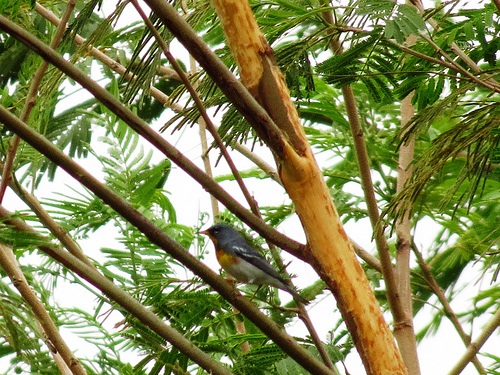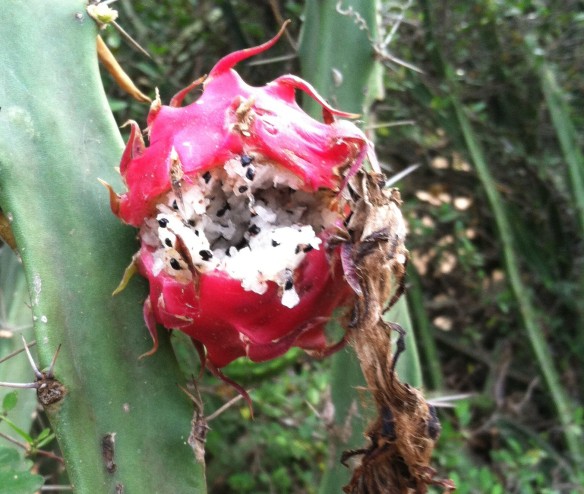A little light rain won’t keep the fun from happening during our Songbird Strolls here at Quinta Mazatlan! The recent and upcoming rains are most-welcomed throughout Texas. The rains bring much-needed moisture to the many flowers, cacti, and trees, all of which support the existence of year-round birds and migratory birds too! We’re just starting to see the early pushes of songbirds trickling through the Lower Rio Grande Valley. Many of the cavity-nesting birds that live here have been busy searching for that perfect tree cavity throughout our snags, to call their home sweet home this upcoming summer.

Black-bellied Whistling Ducks love to perch up high and get a vantage point of their surroundings, especially when looking for a cavity to nest within!

This Plain Chachalaca contributed to the loud chachalaca chorus this morning. Note the lack of a tail on this bird. It may have had a lucky escape from a predator within the recent past!

Inca Dove, also without a tail. Like the Plain Chachalaca shown above, this bird may have had a quick escape from a predator.

The song and appearance of the Curve-billed Thrasher is a delight to all birders. Note the soft tan blotching on the frontside, smooth brownish-tan backside, and bright orange eye on this beautiful bird.

This Olive Sparrow was one of several Olive Sparrows seen scratching throughout the leaf debris in search of seeds. They are always fun to watch, but a challenge to find! Note the band on this bird’s left leg. Blurred in the foreground is salvia, a native species of flower that hummingbirds really like!

Selasphorus hummingbird. Rufous Hummingbirds are most expected here, however on rare occasions Broad-tailed Hummingbirds and the even-rarer (for the area) Allen’s Hummingbird can show up throughout the Lower Rio Grande Valley.
Do you have your hummingbird feeders and water features out? Migrating songbirds of many species will be passing through soon!
Here is the eBird list from this morning’s Songbird Stroll.
Black-bellied Whistling-Duck 50
Cattle Egret 1 Flyover, heading north
Inca Dove 10
White-tipped Dove 1
White-winged Dove 4
Mourning Dove 1
Common Pauraque 2
Ruby-throated Hummingbird 1
Rufous/Allen’s Hummingbird 1
Buff-bellied Hummingbird 3
Golden-fronted Woodpecker 7
Red-crowned Parrot 7
Green Parakeet 2
Great Kiskadee 5
Green Jay 3
Bewick’s Wren 1
Blue-gray Gnatcatcher 1
Ruby-crowned Kinglet 1
Clay-colored Thrush 6
Curve-billed Thrasher 3
Long-billed Thrasher 3
Northern Mockingbird 2
European Starling 2
Orange-crowned Warbler 2
Olive Sparrow 3
Lincoln’s Sparrow 2
Northern Cardinal 2
Great-tailed Grackle 10
House Sparrow 8
Good birding to all! Bring on the rains and migrating birds,
Erik Bruhnke




































 Curve-billed Thrasher posing on a mesquite branch – love those bright orange eyes!
Curve-billed Thrasher posing on a mesquite branch – love those bright orange eyes!
















